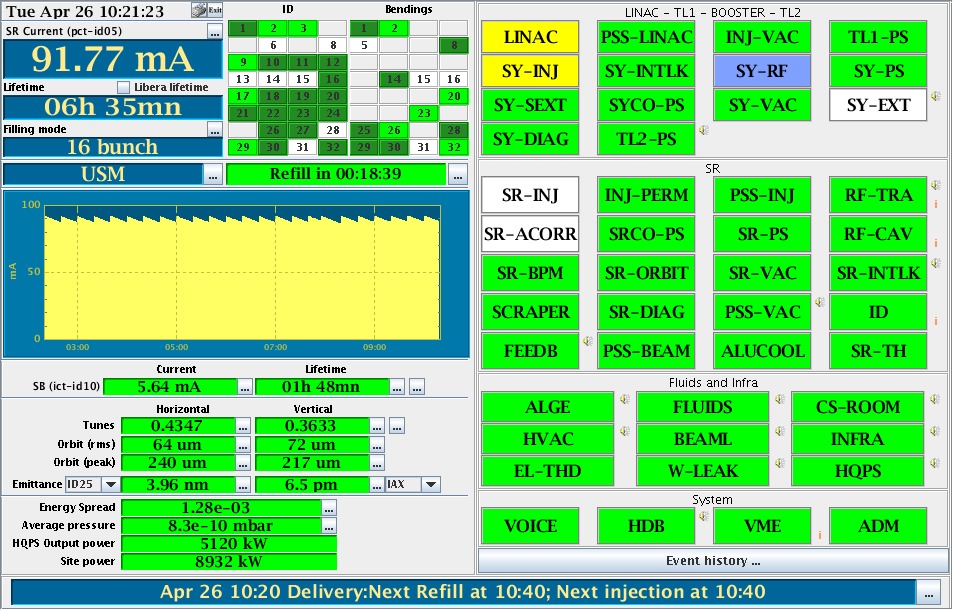- Home
- News
- General News
- Topping-up the electrons:...
Topping-up the electrons: a constant beam for users
28-04-2016
Top-up filling burst in to operation for the first time this week, providing users with better stability, low vertical emittance in all filling modes and a nearly constant beam current.
The new mode sees the accelerators refilled with electrons every 20 minutes rather than every four to 12 hours. This results in a much higher integrated current over a 24-hour period, meaning more photons for the users and better beam stability due to smaller current variations. It also means a low vertical emittance in all filling modes. Previously the vertical emittance would be artificially increased in some modes in order to increase the lifetime, but the nearly constant beam current provided by top-up mode means that the emittance – and the resulting brilliance and resolution for users – no longer has to be sacrificed.
The first reactions from the beamlines that benefit from top-up have been positive. “We are now running a high-pressure, high-temperature experiment (laser heating in the diamond anvil cell) on ID24,” explained Sakura Pascarelli. “Apart from the periodic injection instability, we take full advantage of having almost constant X-ray power on the optics. This is really good for us. We are grateful for the efforts that the Accelerator and Source Division (ASD) has made to provide this.”
 |
|
The Control Room synopsis screen on the first day of top-up operation, showing the 20-minute injection periods and a low vertical emittance of 6.5pm rad. |
The top-up trial period will continue for the last four weeks of the run, with three weeks in 16-bunch mode and one week in 4*10mA mode, before the shutdown in May. At the same time, a new ramped injection power supply system (RIPS) for the booster is being commissioned, and its implementation should further improve topping up by enabling cleaning to be carried out in the booster instead of the storage ring, which will further reduce disturbance to the beam during and after injection.
ASD Director Pantaleo Raimondi thanked all staff involved who contributed to the successful operation of top-up. “We’re looking forward to detailed feedback from users at the end of the four weeks and we expect to implement future refinements over time, especially with the commissioning of the RIPS for the booster,” he said.



